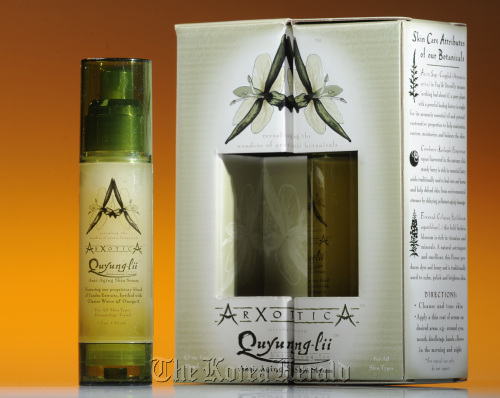ANCHORAGE, Alaska ― Who knew those blue-black clusters of crowberries mingled into blueberry patches across the Chugach range could be the key ingredient in an expensive, antioxidant-packed, wrinkle-fighting serum?
That’s right. Look out, Oil of Olay. Forget Vitamin C and green tea. Make room for beauty products made with the essences of crowberries, fireweed and Arctic sage. Arctic plants are trendy skin-care ingredients.
Cosmetics makers with roots in Finland, Iceland and Russia are already producing a host of items that use antioxidant-rich northern plants and berries. One Alaska company, Arxotica, is looking to do the same thing here. It will be the first large-scale, high-end commercial effort of its kind.
Arxotica ― started by Bethel, Alaska-grown triplets Amy Sparck Dobmeier, Michelle Sparck and Cika Sparck ― should be shipping its first bottle of signature crowberry-based serum, Quyung-lii (pronounced: kia-oong-lee), any day. Quyung-Lii means “the potent one” in Cup’ik. Each bottle, a three-to-five-month supply, retails for $300.
They have $10,000 worth of orders to fill, and another stack to send to beauty editors in New York. After that, it’s back to Bethel to gather more plants. Their ingredients are wild grown and they hope to employ pickers in the Yukon-Kuskokwim Delta to feed the demand. Other products in their high-end line ― cleanser, toner and lotion ― should be coming out in the next three to five months, depending on how fast they can raise the capital.
Arxotica started as an idea in 2000 or so, when Michelle started researching Arctic plants. Arctic sage and crowberry have long been gathered and used by Alaska Natives, she said. Crowberries are eaten in akutaq, or Eskimo ice cream. Arctic sage, known as chiaggluk, is medicinal, used to ease pain and inflammation. Fireweed has astringent and anti-inflammatory qualities. It is also high in vitamins A and C.
“All
 |
The Sparck triplets have launched the cosmetics company Arxotica that uses wild harvested tundra botanicals in their breakout product, an anti-aging skin serum called Quyung-lii. (Anchorage Daily News/MCT) |
our lives, we had to gather these things,” Michelle said. “We started thinking, ‘If it’s good for us like this, how else could it be used?’”
It turns out that many Alaska-grown botanicals, with their short, bright growing seasons, tend to concentrate nutrients in a way that makes them prime sources for cosmetic use, Michelle Sparck told me.
The crowberry, for example, has many times the antioxidants of commercially grown blueberry.
Their idea got a major boost through business development grants from the Alaska Federation of Natives Alaska Marketplace competitions in 2006 and 2008. With about $90,000 in seed money, they commissioned tests and worked on their formulation.
Michelle, who has overseen a lot of the product development, is living in New Jersey now, which is where the product is manufactured. Her sister, Cika, the company’s in-house graphic designer, lives between Baltimore and Anchorage. Amy, an expert in marketing, recently moved to West Virginia. They all spend part of the summer in Bethel, where they were raised, and Chevak, where their mother grew up.
For research and development, the triplets, friends and family picked 800 pounds of berries and plants. Once they settled on a formula, they picked another 1,200 pounds. After that was processed to draw out its essence for the serum, the byproduct, mostly dried, pressed plant matter, still had nutrient value, Michelle said.
That “second rinse extract” will make a less high-end line of moisturizers and body washes. The leftover plant matter will be incorporated into soap for exfoliation. The idea was not to waste what was gathered, she said.
“We want to create an industry that doesn’t have a footprint,” Michelle said.
If their product takes off, they hope to start a gatherers’ cooperative in villages, paying people for picking. They will be careful not to pick in traditional subsistence gathering spots, they said. They don’t want to over-pick in general. That’s something that makes their products even more exclusive.
“It’s a limited run every year,” Cika said. “We’re not going to hurt our source.”
At this point the three have invested close to $250,000 into their company, Michelle said. People tell them their business plan is solid. Their product has plenty of buzz. But with online sales opening very soon, everybody has jitters.
“We keep telling ourselves this is going to pay off,” Michelle said.
By Julia O’Malley
(McClatchy Newspapers)
(McClatchy-Tribune Information Services)







![[Today’s K-pop] Blackpink’s Jennie, Lisa invited to Coachella as solo acts](http://res.heraldm.com/phpwas/restmb_idxmake.php?idx=644&simg=/content/image/2024/11/21/20241121050099_0.jpg)
